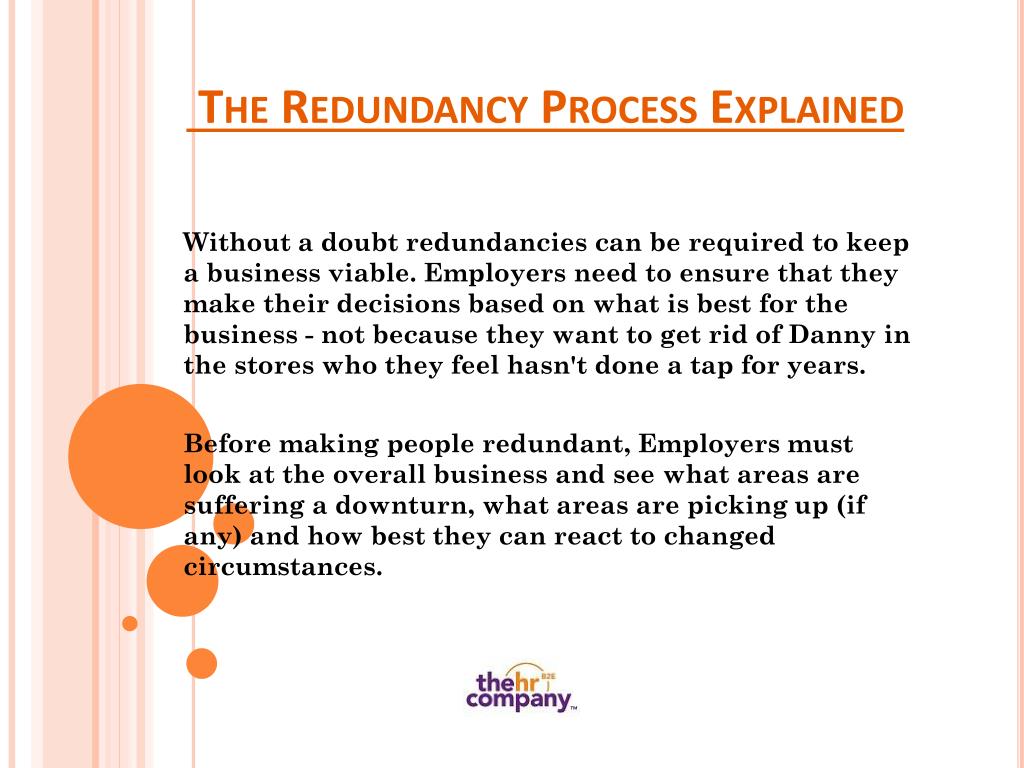Discovering the Operational Dynamics of Company Redundancy and Its Long-Term Sustainability

Redundancy Methods for Business Connection
In order to guarantee continuous operations, companies must carry out reliable redundancy approaches for organization continuity. Redundancy in this context describes the duplication of important elements or features within a system to alleviate the influence of possible failures. By integrating redundancy methods, companies can boost their durability versus disturbances brought on by various factors such as natural calamities, equipment failings, or cyber-attacks.
One usual redundancy strategy is the implementation of backup systems and data storage space solutions. This involves creating matches of vital information and systems that can be turned on in instance of a key system failing. In addition, companies can develop repetitive interaction channels and source of power to maintain connection and operations throughout unexpected events.
Furthermore, cross-training employees to execute several roles within the company can function as a beneficial redundancy technique. This makes certain that vital jobs can still be accomplished also if essential workers are not available because of health problem or various other reasons. Overall, reliable redundancy methods are important for organizations to support operational continuity and minimize the effect of potential disruptions.
Effect of Redundancy on Organizational Strength
Provided the essential function redundancy strategies play in guaranteeing service continuity, exploring the influence of redundancy on organizational resilience ends up being critical for understanding the alternative operational characteristics of a business. Business resilience describes an entity's ability to adjust to interruptions, recover from obstacles, and transform when needed while keeping core functions. Redundancy, when strategically executed, can dramatically add to improving a company's resilience when faced with unforeseen challenges. By having back-up systems, workers, or procedures in place, business can much better stand up to shocks and proceed procedures with marginal disturbance.
Furthermore, redundancy can strengthen staff member morale and self-confidence, understanding that there are contingency plans in location to address unpredicted circumstances. This complacency can lead to enhanced efficiency and a more favorable work environment. Furthermore, redundancy can promote development and creative thinking within an organization as employees feel encouraged to take computed risks, understanding that there is a safeguard to sustain them in instance of failure. On the whole, the effect of redundancy on business strength is profound, shaping the long-lasting sustainability and success of a company.
Balancing Performance and Versatility in Redundancy
Accomplishing an unified stability between operational efficiency and adaptive versatility is a critical difficulty in the critical release of redundancy within organizations. As well much adaptability without a strong functional structure can result in inadequacies and inconsistency.
To balance performance and adaptability in redundancy planning, organizations need to meticulously evaluate their operational demands, market dynamics, and tactical objectives. Executing lean practices can enhance effectiveness by eliminating and improving processes waste, while cultivating a culture of flexibility and continual enhancement can enhance adaptability. Furthermore, spending in cross-training programs and durable interaction channels can assist cultivate a versatile workforce with the ability of managing diverse jobs during periods of transition. Eventually, finding the appropriate balance between effectiveness dig this and flexibility is critical for developing a durable and lasting company when faced with uncertainty.
Long-Term Sustainability Through Redundancy Preparation
To make certain enduring viability and stability, organizations need to tactically align their redundancy preparation with long-term sustainability goals, thus harmonizing functional efficiency with adaptive adaptability. Long-term sustainability through redundancy preparation entails greater than simply temporary cost-cutting steps. It calls for a comprehensive critical click here to read approach that prepares for future difficulties and possibilities. Companies ought to view redundancy not as a responsive solution to instant troubles yet as a proactive method for long-term success. By integrating redundancy preparation with sustainability purposes, companies can develop a durable structure that can hold up against numerous market changes and internal modifications.

Proactive Procedures for Lasting Company Workflow
Exactly how can companies proactively improve their functional sustainability for long-lasting success? Carrying out positive procedures is crucial for companies aiming to ensure lasting procedures.
Furthermore, fostering a culture of continuous renovation and understanding within the company can improve flexibility to altering market problems and customer demands. Urging worker involvement in decision-making processes and giving possibilities for specialist advancement can increase morale, efficiency, and total efficiency. Establishing clear objectives, monitoring essential efficiency indicators, and on a regular basis assessing progress are essential elements of proactive sustainability monitoring.
Collaborating with distributors, clients, and other stakeholders to advertise sustainable techniques throughout the supply chain can produce a ripple result of positive impact - redundancy pay if company goes bust. By taking positive actions get more in the direction of operational sustainability, firms can construct durability, drive innovation, and protect their long-term success in an ever-evolving company landscape
Conclusion

In the world of organizational administration, the calculated deployment of firm redundancy stands as an essential yet detailed practice that necessitates a fragile equilibrium in between operational performance and long-lasting viability. By exploring the operational dynamics that underpin firm redundancy and assessing its broader effects for organizational durability and flexibility, a nuanced understanding of exactly how redundancy strategies can form the future trajectory of a company starts to unravel.Provided the crucial duty redundancy methods play in ensuring service connection, exploring the effect of redundancy on business resilience ends up being important for comprehending the all natural operational characteristics of a company. Overall, the impact of redundancy on organizational strength is extensive, shaping the long-lasting sustainability and success of a company.
In verdict, understanding the functional dynamics of company redundancy is critical for making sure long-lasting sustainability.